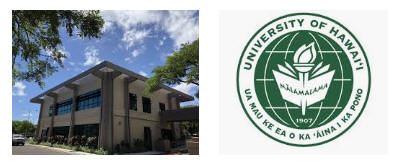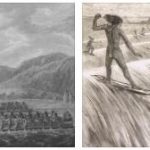We have created a 2019 ranking of the best colleges in Hawaii that offer Law degrees to help you find a school that fits your needs. Each school’s ranking is based on the compilation of our data from reliable government sources, student surveys, college graduate interviews, and editorial review. In addition, you can view our entire list of all law schools located within Hawaii. We also provide reviews, facts, and questions and answers for schools on our site and offer you access to get valuable information from colleges and universities today.
| University of Hawaii William S. Richardson School of Law | Honolulu, Hawaii |
|---|---|
| Score | 47 |
| Peer assessment score (5.0 highest) | 2.4 |
| Assessment score by lawyers/judges (5.0 highest) | 2.6 |
| 25th-75th percentile GPA scores for all students | 3.18-3.68 |
| 25th-75th percentile LSAT scores for all students | 153-158 |
| Overall acceptance rate | 23.4% |
| Student/faculty ratio | 7.8 |
| Graduates employed at graduation | 70.7% |
| Graduates known to be employed nine months after graduation | 100.0% |
| School’s bar passage rate for first-time test takers | 86.5% |
| State where the greatest number of first-time test takers took the bar | HI |
| Statewide bar passage rate for first-time test takers | 87.6% |
About Hawaii
Hawaii has been the 50th state in the USA shortly after Alaska since 1959. The nickname is ” Aloha State “, which is how the well-known greetings on the islands have been included in the nickname.
Hawaii consists of several islands, but the largest island of the same name, also known as the Big Island, is the namesake for the entire archipelago. Although Hawaii is part of the United States of America, the island is part of the Polynesian cultural area and is geographically one of the South Pacific islands. It forms the northernmost part of the Polynesian triangle.
With the immigration of Japanese and Americans, Hawaii lost part of its cultural identity. Even though the Polynesian tradition is still visible everywhere and is widely practiced, the western way of life quickly spread on the island. This development eventually led to a referendum in which the majority of the population decided to join the United States.
The Hawaiian Islands run through the ocean like an island chain in the central Pacific. Due to its geographical location, Hawaii offers an interesting mix of America, Asia (especially Japan) and the Pacific Polynesian culture.
The largest cities after Honolulu are Pearl City, Hilo, Kailua, Waipahu and Kaneohe. The cost of living in Hawaii is the highest of all states in the United States because of the long import routes, little storage capacity and high demand. Real estate is hardly affordable, although there are regional differences. The region around Hilo (endangered by tsunamis and volcanic eruptions) is one of the cheapest residential areas in the state.
Hawaii: facts
- Area: 28,311 sq km
- Population: 1,427,538
- Abbreviation: HI
- Capital: Honolulu
- Local time: GMT -10
- Nickname: The Aloha State
Volcanism, lava and snow in tropical latitudes
Covering an area of 16,625 sq km, 137 islands are spread across the state. Many of them are uninhabited today. The main inhabited islands of Hawaii are Oahu (most densely populated and with the capital Honolulu the island with the only metropolis), Big Island (the largest island with a strongly volcanic character and controlled flowing lava), Maui (very diverse and many beaches) and Kauai (secluded and quiet with the impressive north coast).
There are also smaller islands such as Molokai, Lanai and Niihau. Niihau Island is privately owned and is not freely accessible. Some Polynesians still live here in the traditional way of life. In the meantime, occasional excursions are still offered from Kauai, but the visits are still very controlled.
The state of Hawaii motto is “Ua Mau ke Ea o ka Āina i ka Pono”. This saying in the Hawaiian language means in English about “righteousness preserves the life of the country”. The Hawaiian language still plays a certain role in everyday life, but especially in the designation of places, animal names or festivals. In general, the old Hawaiian traditions are reviving with the younger generations, not just the hula dance and the lei wreaths. Hawaiian is the official language of the state alongside American English. Furthermore, a Hawaiian Pidgin variant is spoken on the islands, which is the mother tongue for many.
Hawaii’s population consists of over 40% Asians (mostly Japanese, Filipinos and Chinese), and about a quarter of people of European origin. Native people make up almost 8% Polynesians and Hawaiians. Many churches and religions are represented on the islands, the most important being Christianity (mostly Protestants, but also Catholics) and Buddhism. There are also minorities such as Mormons, Jews, Baha’i, Shintoists, Muslims, Hindus, Taoists and Confucians.
The mild climate enables year-round tourism and if there is a place on earth that can be called the islands of eternal spring, Hawaii has very good arguments to get this title. It never really gets hot and never too cold. In winter, however, you can find snow on some peaks such as the 4,205 m (actually it grew from the sea floor and therefore the highest mountain on earth at 10,205 m!) High Mauna Kea, on whose summit there is also a very powerful observatory.
One reason why there is an observatory here of all places is the clear air and the manageable lighting conditions in Hawaii. The atmosphere here is hardly disturbed by artificial light from cities.
It was not until the beginning of 1778 that the British explorer James Cook landed on the islands. These were already populated by Polynesians. From 1810 the Kingdom of Hawaii was united and ruled by the ruler Kamehameha I. The United States sent Christian missionaries, but otherwise they officially recognized the state of Hawaii in 1842. In 1894 Hawaii became a republic before it fell to the United States as a U.S. territory in 1898.
Initially, sugar cane was economically important and later also the cultivation of pineapple. The ports also acted as important stations for whalers. Pearl Harbor has been expanded to become an important U.S. naval base. The December 7, 1941 is one of the Japanese attack on Pearl Harbor and the United States in history as the day. Today Hawaii is a blue state politically and usually supports the moderate U.S. Democratic Party.
In general, Hawaii is considered a relatively liberal and tolerant state of the United States of America.









